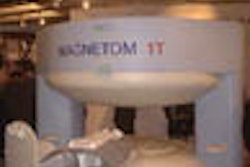WASHINGTON, DC - Proper medical care can often hinge on a clinician's receipt of abnormal imaging findings. But with the heavy workloads common in today's healthcare environment, clinicians can't always check every radiology report, and radiologists don't always have time to call referring physicians with abnormal results. The ramifications, both legally and in terms of patient care, can be serious.
"Important imaging results are sometimes overlooked or not followed up, and patients fall through the cracks," said Dr. David Schuster of the Asheville VA Medical Center in Asheville, NC.
To ensure that clinicians are notified of abnormal radiology results, and to create an electronic paper trail that can be easily followed up by a hospital quality management team, two VA medical centers and other VA healthcare institutions have implemented components of an automated results notification system.
One part of the system offers an e-mail notification feature, while another separate component offers the ability to transmit an electronic alert to the clinician's computer. Findings requiring immediate clinical action are also communicated by traditional means, such as a phone call or an in-person visit.
Dr. Schuster discussed the Asheville and Boston VA Medical Centers' experiences with the systems during a scientific session at this week's meeting of the American Roentgen Ray Society in Washington, DC.
Both components of the system, which is used in varying degrees throughout the VA health system, utilize clustered Alpha PCs from Compaq, and the Virtual Memory System (VMS) operating system with applications written in the Massachusetts General Hospital Utility Multi-Programming System (MUMPS) language. The system operates within the VA's own Veterans Health Information Systems and Technology Architecture (VISTA) environment. The alert function also makes use of an interface with the VA's computerized patient record system.
After the radiologist has verified an imaging report with an electronic signature, the alert function prompts him or her to enter a mandatory diagnostic code. The codes categorize reports into normal and various abnormal categories. Certain abnormal codes trigger an electronic alert notification, which is displayed immediately on the ordering clinician's computer monitor.
By clicking on the alert, the clinician gains immediate access to the report, which can then be sent as e-mail, printed, or forwarded to another user, according to the VA researchers. Since the system is integrated with the VA's EPR software, clinicians clicking on the alert are taken right to the patient's electronic chart, Schuster said.
"From here, the clinician can go and order a CT scan, perhaps consult the pulmonologist, and maybe then go into a 'notes' tab and write a note about how this patient is being followed up," Schuster said.
In addition to notifying clinicians immediately about abnormal findings, the alert system also offers tracking capabilities. If an alert is not read within 14 days, it is forwarded to the recipient's supervisor. Alerts are also monitored by the facility's quality management staff to ensure appropriate follow-up. The VA researchers have determined that 10% of all imaging reports generate an alert notification. Of these alerts, only 2% were not read within 14 days.
In an e-mail version of the results notification system, the radiologist verifies the imaging report with an electronic signature following dictation and transcription. At that point, the reports are immediately available on the VISTA system, and if desired, can be forwarded to any e-mail address inside or outside the system, Schuster said. The e-mail option requires a few extra manual keystrokes, and adds 15 to 30 seconds to the verification process for each report, he said.
The sender can copy a report to an electronic notification folder as proof that it has been sent, and can even confirm that the report has been read by the recipient. The e-mail notification system has been in use for more than two years at both VA sites, and has been enthusiastically received by radiologists, clinical services, and quality management personnel, Schuster said.
AuntMinnie.com staff writer
May 10, 2000
Let AuntMinnie.com know what you think about this story.




















